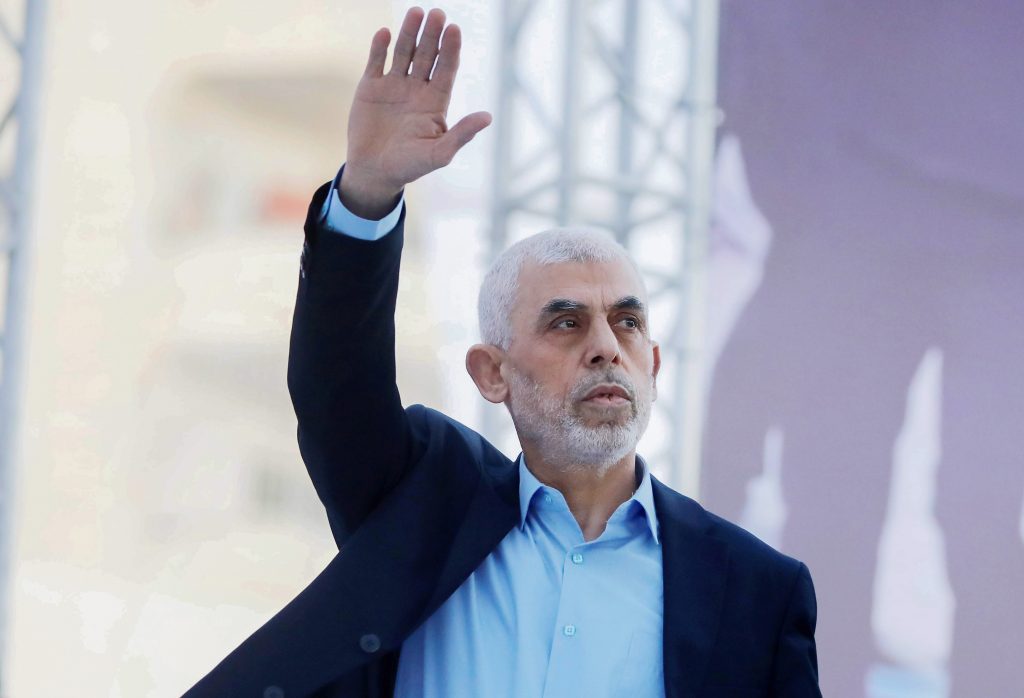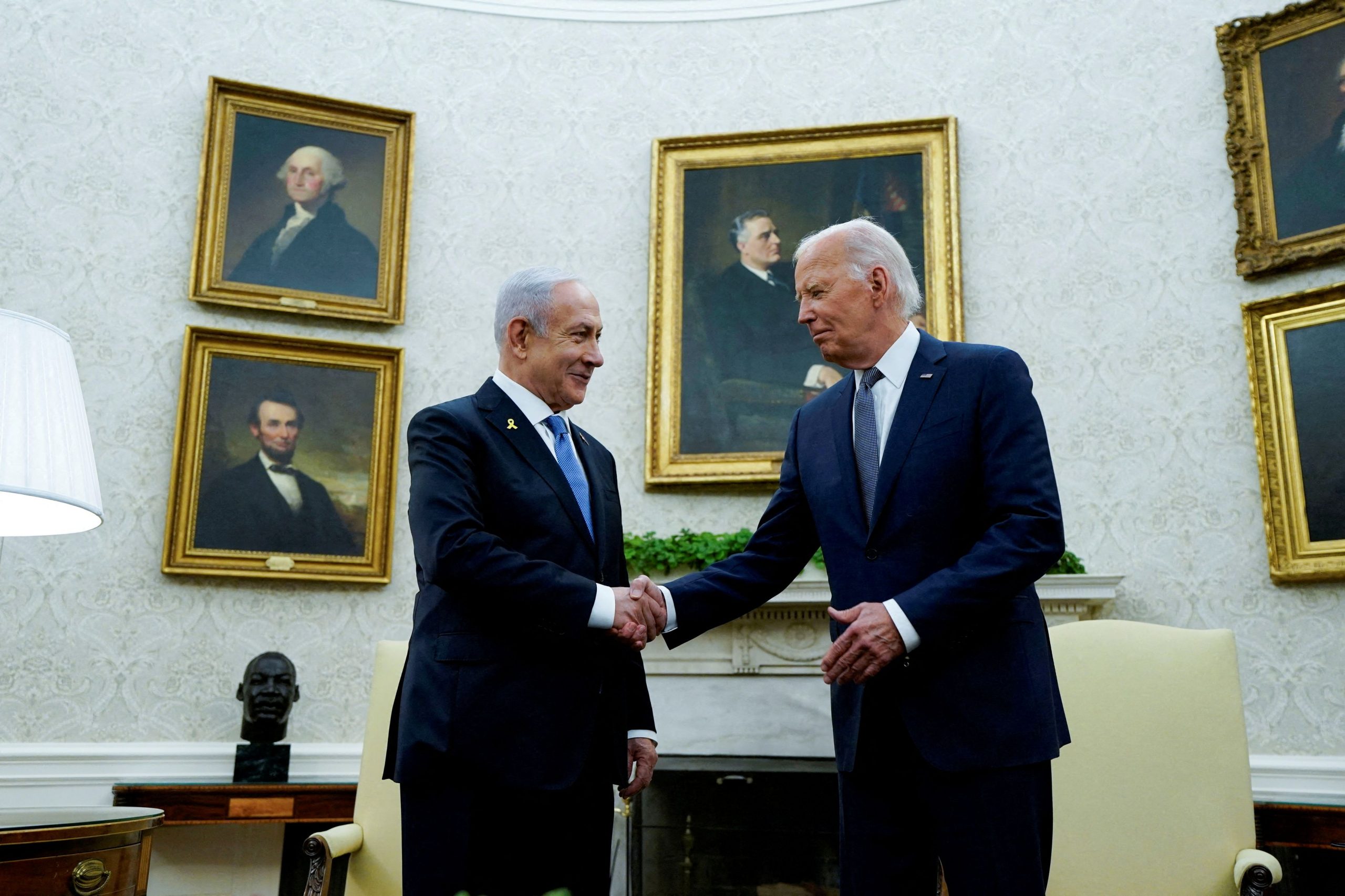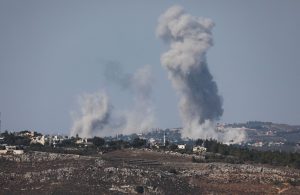WASHINGTON—The Biden administration is seeking to leverage the death of Hamas leader Yahya Sinwar to bring about an end to the bloody war in Gaza, but Israel and Hamas are signaling that they aren’t yet ready to halt the fighting.
Secretary of State Antony Blinken is planning to head to Israel and likely other Middle East countries next week, which would be his 11th trip to the region since Hamas’s October 2023 attack in the administration’s yearlong bid to reach a deal.
Among the issues on his agenda is the release of Hamas’s hostages, the acceleration of humanitarian aid to help starving Gazans and formulation of a postwar plan that would preclude the group from being in charge of the strip, provide for the withdrawal of Israeli troops and establish an Arab-led stabilization force.
President Biden emphasized to Israeli Prime Minister Benjamin Netanyahu and in public comments the need to end the war in Gaza “once and for all,” which would enable the parties to avoid being bogged down in prolonged talks over a temporary cease-fire.
“I told the prime minister of Israel yesterday, let’s also make this moment an opportunity to seek a path to peace, a better future in Gaza without Hamas,” Biden said during a visit Friday to Germany.

Yahya Sinwar, head of the Palestinian Islamic movement Hamas in the Gaza Strip, waves his hand to the crowd during the celebration of International Quds Day in Gaza City. (Photo by Yousef Masoud / SOPA Images/Sipa USA)No Use Germany.
Still, the U.S. initiative faces an array of obstacles, not least determining who will take charge of the militant group and the possibility that a looming Israeli attack on Iran that might lead to an escalation of fighting across the region.
In a Thursday call, Blinken pressed the prime minister of Qatar, which has served as an intermediary with Hamas, “to redouble efforts to end the conflict.” He made similar calls to the Saudi foreign minister and Israeli President Isaac Herzog .
Just hours after Sinwar’s killing, Netanyahu confirmed that he planned to keep pursuing Hamas, saying that “the war isn’t over.” Israel hasn’t said what it would take to end the conflict: the release of the hostages or the killing of more of Hamas’s fighters, some of which have sought refuge in civilian areas. At least half of the group’s top leaders have been killed.
Hanging over this debate is Israel’s plan to attack Iran to retaliate for a ballistic missile attack on Israel this month. That might lead to a new round of tit-for-tat attacks between the two countries just as the U.S. is trying to avert a wider regional conflict.
Solving the Gaza puzzle is now the Biden administration’s main task for the next three months, though it would prefer to have it largely settled before Election Day, less than three weeks. Vice President Kamala Harris , neck in neck with former President Donald Trump in the polls, asserted during a campaign event in Wisconsin that “this moment gives us an opportunity to finally end the war in Gaza.”
An immediate issue is determining who Hamas’s next leader will be as the U.S. and its Arab partners seek to map out the region’s future.
Sinwar, the mastermind of the October 2023 attack on Israel quickly became Hamas’s overall leader after Israel killed former leader Ismail Haniyeh in Tehran in August. But now the choice of a successor is less clear.
“A key question is whether Hamas looks for a leader outside of Gaza who would be inclined to negotiate a potential cease-fire deal or selects someone inside Gaza like Sinwar’s brother Mohammed who would be more inclined to continue the war,” said Jonathan Panikoff, a former senior U.S. intelligence officer on the Middle East who is now at the Atlantic Council.

A person holds a sign with a reference to Hamas leader Yahya Sinwar, after Israeli military said they have killed him, as families and supporters of hostages kidnapped during the deadly October 7, 2023 attack, protest to demand their immediate release, amid the ongoing conflict in Gaza between Israel and Hamas, in Tel Aviv, Israel, October 17, 2024. REUTERS/Violeta Santos Moura
Yet another issue, noted Mick Mulroy, former deputy top Pentagon official on the Middle East, is whether the next named Hamas leader could sustain a “functional chain of command that would adhere to that deal.”
The U.S. effort also comes amid fears that Hamas could retaliate against the remaining hostages, leaving little time for drawn-out diplomacy and dashing prospects for a cease-fire. Many of the roughly 100 hostages, which include a half dozen Americans, are believed to be dead. The U.S. and Israel have warned Hamas against killing any hostages in retaliation would derail the diplomacy and encourage Netanyahu to continue the war.
After months of start and stop meetings, the cease-fire talks have broken down. Israel and Hamas had agreed to most of an 18-paragraph cease-fire text, but the final sticking points—namely which prisoners to exchange for hostages—proved insurmountable, according to U.S. officials.
The Biden administration blamed Hamas, and Sinwar specifically, for an unwillingness to make a deal. Some U.S. officials also blamed Netanyahu for constantly shifting his nonnegotiable priorities, including stationing Israeli forces along the Gaza-Egypt border to preclude potential shipments of weapons to Hamas.
“We’re not in a position right now where serious negotiations are in the offing,” National Security Council spokesperson John Kirby said Friday, referring to the cease-fire negotiations.
That has led to more focus on ideas for moving more quickly toward a settlement of the Gaza conflict in which the release of hostages and the removal of Israeli forces would be a byproduct.
“It isn’t by happenstance that the president mentioned ‘day after’ planning and efforts in his statement last night,” Kirby added.
The main points that would guide a settlement, spelled out by Blinken nearly a year ago during a November G-7 meeting in Japan, have become known as the “Tokyo principles.” There can be no reoccupation of Gaza by Israeli forces after the conflict’s end, attempts to blockade the strip or reduction in Gaza’s territory, the U.S. said.







